You live in a triangle of three countries, across five regions with different languages and cultures at a very short distance. No matter if you are native to the Euregio Meuse-Rhine or came from afar – everyone is somehow abroad at some point in their daily life.
Find newsletters, minicourses, and different modules on how to face the intercultural challenge between the German Rhineland, Southern Limburg, Belgian Limburg, Liège Province, and East-Belgium.
To come: Intercultural Newletter
This newsletter is actually a selection of eight most important aspects, for people that live or work in both Germany and the Netherlands. This is the unique option to learn about how the neighbours perceive each other – in English.
Euregional commonalities and differences
The Euregio Meuse-Rhine unites different areas. People in Aachen perceive hierarchy different from their neighbours in Maastricht, Hasselt or Liège. They also have different standards in communication and what is “normal”.
On the other hand, the neighbouring regions share a lot of common history, traditions, and even languages. They also share a somewhat common everyday life and labour market across borders.
Linguacluster is more about traditions and regional particularities across Belgium, Germany, and the Netherlands. It unites 30 topics across the cross-border triangle in three languages. For children and their parents.
Belgium, Germany, and the Netherlands also share a common history of “Guestworkers”, especially from Italy, Morocco, and Turkey. They have shaped and co-created their new home countries in some (similar) ways.
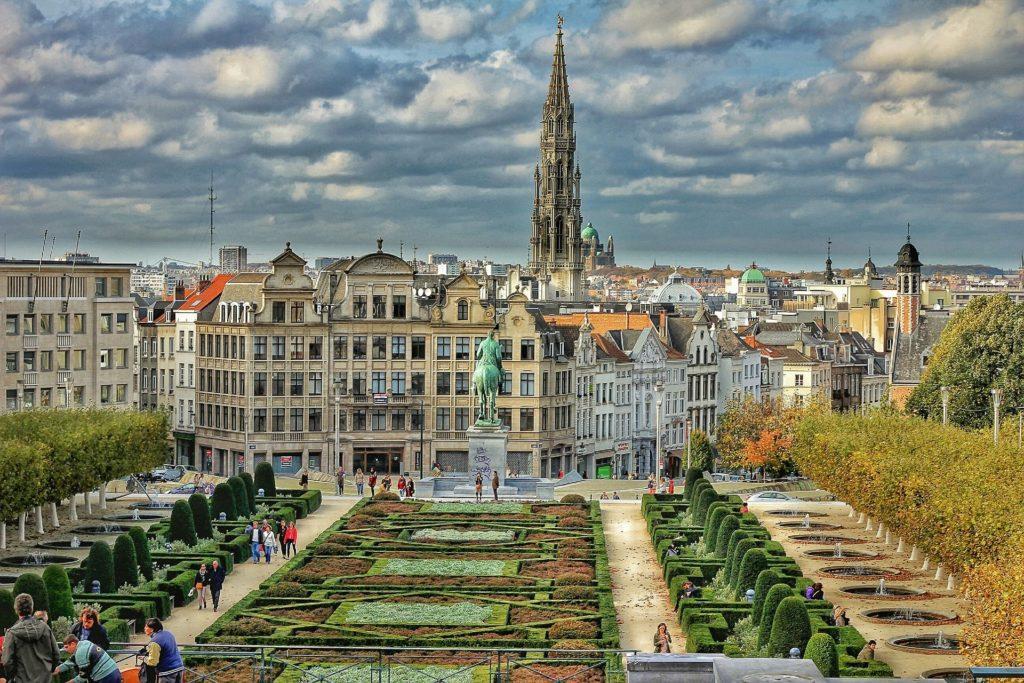
Intercultural Belgium
Belgium is an intercultural universe in itself. Three language communities and three (not quite the same) regions split the country`s everyday life. However, the parts of Belgium share more than a common foreign policy and the railroad network:
- Find podcasts on all possible topics regarding the “random history of Belgium“
- Find a quick overview on those topics and actors that determine Belgian everyday life – from language conflict to Art Nouveau (Portal Belgien/Kultur, German only)
- Find background on history and languages in East-Belgium (German only)
- To discover more of (francophone) Belgium, vivreenbelgique.be is a good start (French only)
- A great variety of topics on germany-based “Belgiennet“, including blogs, articles and material for language learning
Understanding the Germans, understanding the Dutch
When it comes to Germany and the Netherlands, cultural differences are subject to a whole lot of publications and online-material.
- Duitslandinstitutt.nl lists all you need to know to undertand Germany better. From history, politics and daily life (from a Dutch perspective, in Dutch only).
- The Cross Border Information points illustrate how to go about cultural differences at your (new) workplace in Germany or the Netherland (DE/NL only)
- Brochure Succesfull business communication (for German companies in the Netherlands).
- With Dutch subtitles, find this Podcast-interviews give a (long) personal testimonial on the differences between both countries (DE/NL only)
- “Lekker anders” is a podcast and interview-series that describes how Germany and the Netherlands are similar and yet different (DE/NL only)
- The Netherlands and the Dutch – language and culture is a free publication (DE/NL only)
- Several dimensiions of cultural differences with the Netherlands, from a German perspective (in DE/NL only)
More podcasts and blogs
- Summary of German-Dutch blogs (DE / NL only)
- A Dutch in Germany (DE/NL only)
- A German in the Netherlands (DE/NL only)
- Differences in German/Dutch Corona policies in Buurtaal-blog (DE/NL only)
- Convincing (NL/DE only) presentations for a German audience
Language Learning
- Forum.nl for Germans to quickly learn Dutch and exchange with native speakers
Studying
- Experiences on studying in Germany from a Dutch perspective (DE only)
Cross-border News
- Grenzpost
- NiederlandeNet by Universität Münster
Further reading
Undutchables (commercial recruitment website, yet free material, all in English)
- Making the move to the Netherlands
- How to integrate into the Dutch society?
- About the Dutch empty bike syndrome
- Keeping up with the Dutch business culture
- Dutch Lunch

Intercultural models
Culture and cultural differences is something vague and we need methaphors to grasp and easen its complexity. As a rule of the thumb, all methapors and models invite to take a closer look, to not stop with the headline or first impression. Be quick to watch but slow to judge!
Intercultural differences can become a challenge when you do not know how to deal with them. Some easy theories can help you to pinpoint the issue you actually face, go explore and finally enjoy.
Culture explained as an iceberg:
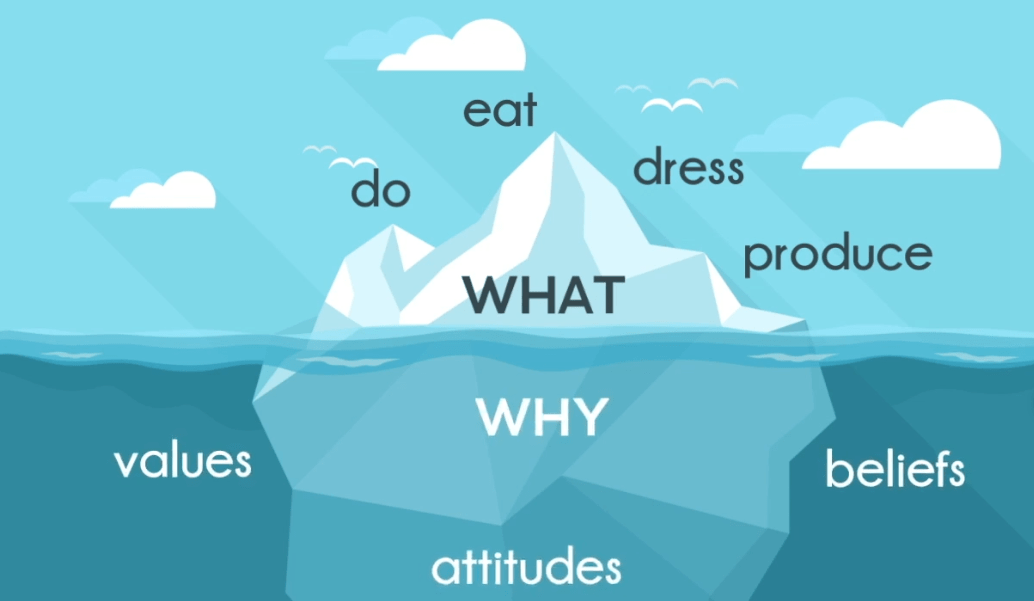
By loading the video, you agree to YouTube's privacy policy.
Learn more
We see something and interpret. If someone does not say “thank you” or “you are welcome”, we interpret that the person’s attitude is somewhat unfriendly or even hostile. A more indepth-understanding of the Eisberg-Model will help you navigate intercultural everyday life and look beyond the surface.

By loading the video, you agree to YouTube's privacy policy.
Learn more
Kommunikationsmodell Schulz-von-Thun is another approach to look behind messages. The trainer identifies four aspects to every message, see the in-depth video explanation video (DE only):
Message: “I see an iceberg!”
Information aspect: “There is an iceberg, and it is not too far”
Call to action: “Do anything to avoid crashing the iceberg”
Relational aspect: “Dear colleague, why didn’t you see something until now?”
Reveiling information about myself: “I am afraid that the Titanic might sink”
TEDx-video on different cultural expactations:
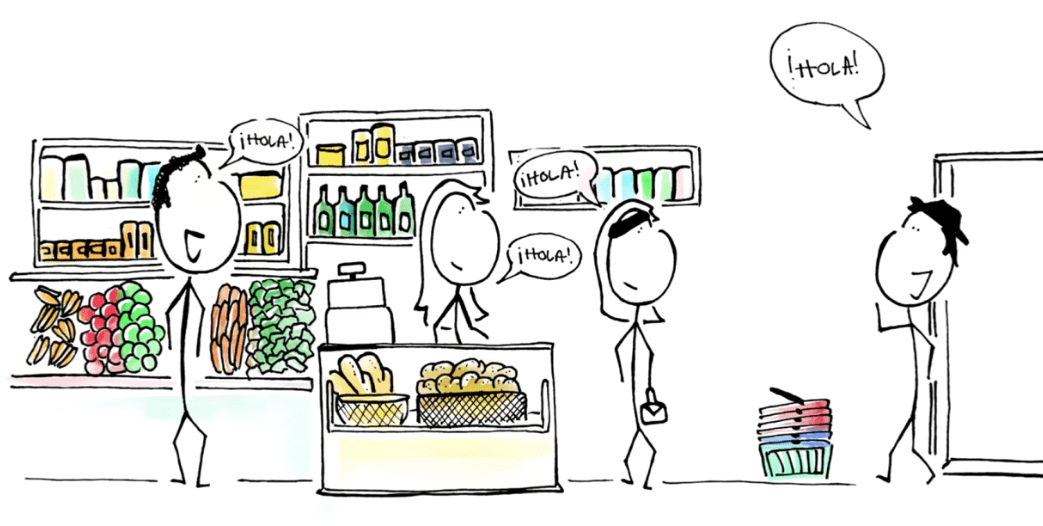
By loading the video, you agree to YouTube's privacy policy.
Learn more
What is normal? We see the world through cultural glasses, and interpret behaviour in the way we grew up and perceive “normal”. In other cultures, glasses have another colour, just as in people in love see the whole world through rose-coloured glasses.
How to eat an elephant? Bit by bit.

By loading the video, you agree to YouTube's privacy policy.
Learn more
This method is called “5 times why?”. A problem is named and refined.A vague: “I feel lonely” can be broken down to its pieces and addressed.
- 1. why I feel lonely: “Because I do not have any friends”
- 2. why I don’t have any friends: Because “I do not attend any sports classes”
- 3. why I don’t attend any sports classes: “Because I don’t like sports”
- 4. why I don’t like sports: “Because I prefer to draw”
- 5. why or solution: I should rather go with a drawing class, instead. I will drop the sports but find an interesting course right now.
Cultural dimensions
The Dutch sociologist Hofstede tried to map the three (and more) countries along with so-called “cultural dimensions“. This is to be understood as an approach to name the differences vaguely perceived. It is not to be taken for absolute truth!
Culture shock - phases explained
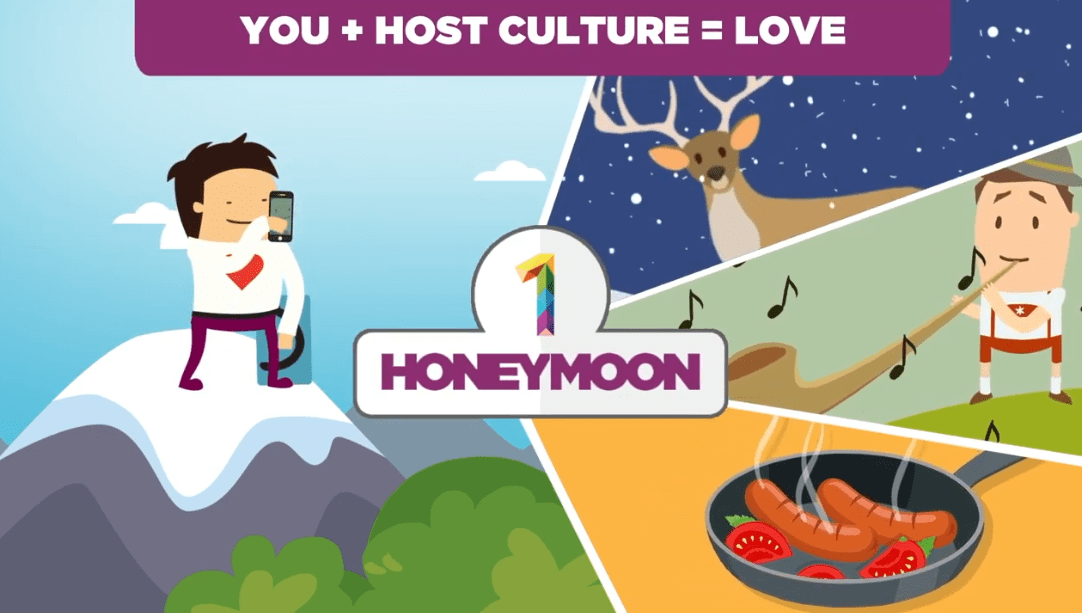
By loading the video, you agree to YouTube's privacy policy.
Learn more
Most people love holidays and travelling. Everything is just great, a new country can be lovely and exotic in the beginning. After some time, you might be frustrated, you might become passive and want to depend on someone from your own country. This is normal and even necessary to adapt, you just need some time and effort to restructure the way you are. It will bring you closer to the new culture and you’ll learn to accept two normalities at once. Going back to your (home-)country can lead to a reverse culture shock.
Onion model

By loading the video, you agree to YouTube's privacy policy.
Learn more
Similar to the iceberg, culture can be explained like an onion. Some aspects are on the surface, but the core is on the inside. You have to work your way there to really understand. Similarly, each people’s behaviour is somewhat visible, but motivated by beliefs and values that ly in the core.
Culture shock for cross-border commuters
There are many theories on how living across borders is like – but yet, there was no model how living across borders is like when you actually live in two or three countries at once. For 26,000 people in the Euregio Meuse-Rhine, however, this is a reality and we accepted the challenge to co-create something.
What many expect
Many imagine their life abroad as a rising curve: Getting around, learning the language, getting to know people – it gets better bit by bit. Yes, there are frustrations, but they do not disturb the overall tendency.
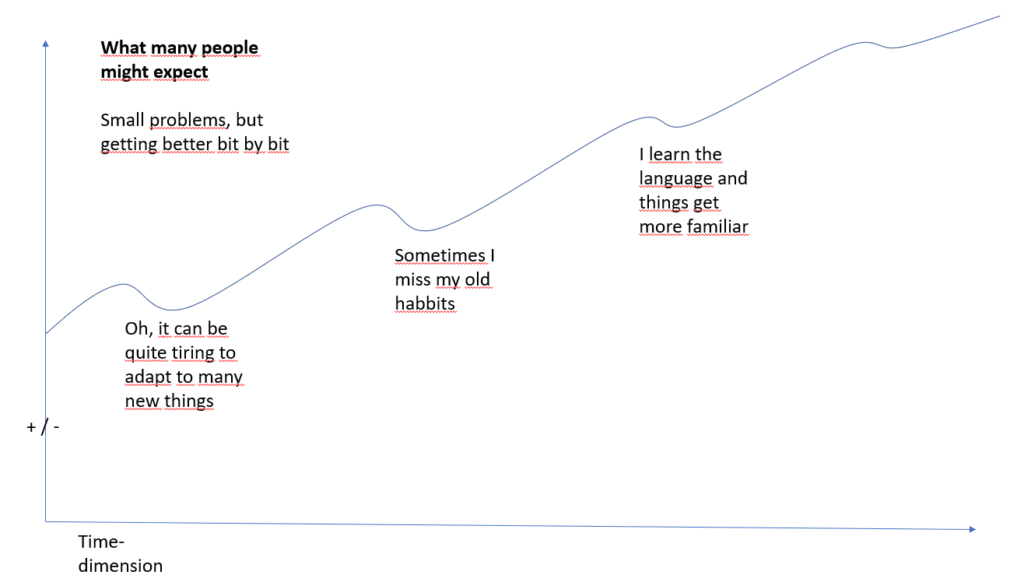
What theory says
Theory – and experiences – divide several phases. it is normal to be in an excited “Honeymoon” in the beginning, and a deep culture shock is also normal. A culture shock is even necessary to adapt to a new everyday life and culture, like a rite of passage.
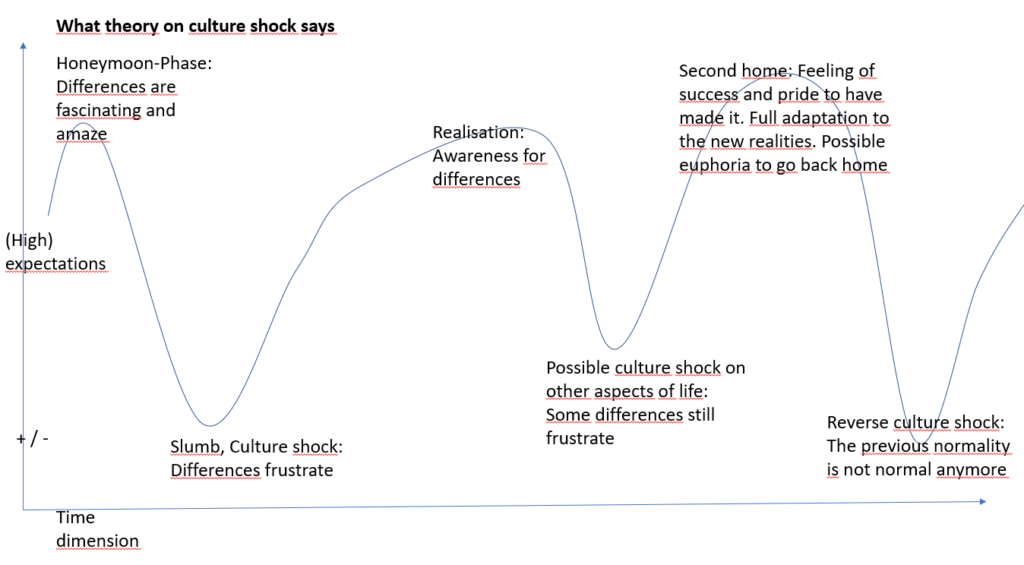
Experiences from cross-border commuters
When you return to your home country every day after work, you experience a reverse culture shock every day – well, do you? Here is a model to give some hints on what to expect when living and working in two countries at once.
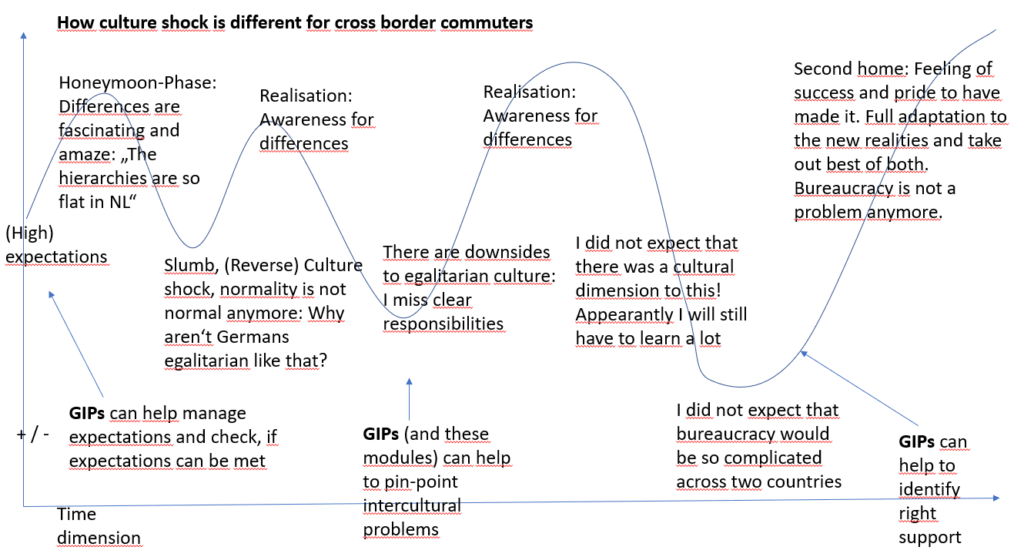
Example: Flat hierarchies in the Netherlands
Peter comes from Germany and started working in the Netherlands.
In the beginning (honeymoon), he is amazed by how flat hierarchies are compared to what he was used to. He can address his boss in an informal way, it does not even feel like he was his boss.
After some time, however, he is enerved. There is no clear structure and responsibility, meetings seem quite chaotic, and plans are changed several times.
Later, Peter understands the context of this working culture and sees the pro’s and con’s more clearly. He sees a pattern behind what appeared “chaotic” and learns about the law of “voortschrijdende inzicht” and actually likes this attitude of just doing, failing, doing again, failing better.
If Peter came come back to work in a (stereo-)typical German company, he might experience a reverse culture shock when communication is formal and hierarchy more strict.
Puzzle-model to explain cross-border asymmetries
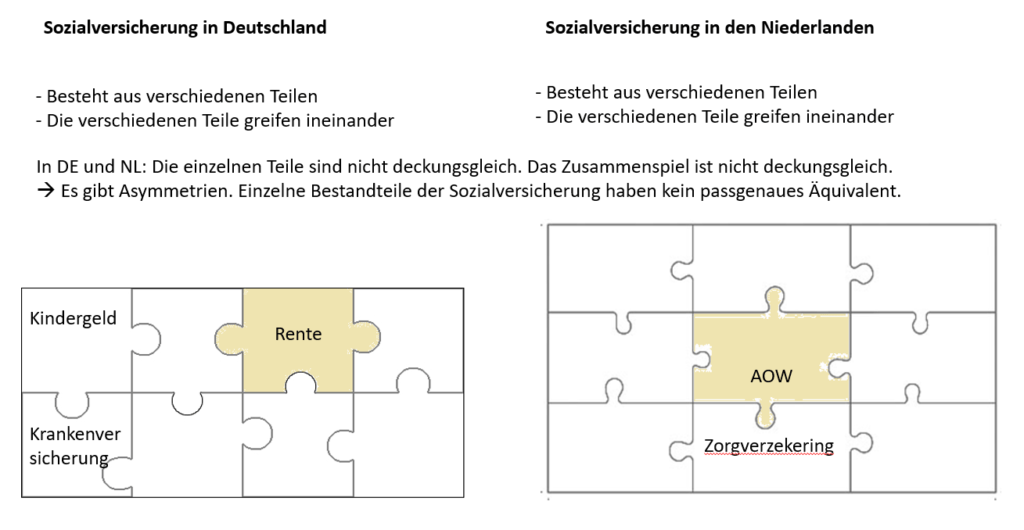
Culture is like a puzzle built of various puzzle-pieces. Many puzzle pieces re-occur in every culture, but they often have a different shape or have another context. Across borders, in culture and bureaucracies, there is always an asymmetry.
For example pension: The German “Rente” is an important puzzle-piece of the German social security; such as the Dutch “AOW” is in the Dutch social security system. But both are not fully equivalent, and transferring one to the other leads to some frictions and questions. The Grenzinfopunkte are a free service to facilitate the transfer from one system to another so it fits best for you.
Videotutorials to get things done in the Netherlands
Each country has a different bureaucracy. When you start living or working abroad, this is one of the first sides of the iceberg that you will be confronted with. You might not understand why something is necessary that you did not even do in your previous (home-)country, cf. the iceberg model. And you might not fully comprehend what you are actually doing, as one bureaucratic piece in the new context is not fully equivalent to a similar one in the old context.
How to go about ...
Find our listing with some helpful advice on solving the practical aspects of intercultural life.
Burgerservicenumber BSN (NL)
Join Marie from Liège on her way to get her BSN done:

By loading the video, you agree to YouTube's privacy policy.
Learn more
Find all official information on the BSN this video from https://jiphaaglanden.nl/
Join Bianca in her move to the Netherlands and getting her BSN-number (DE only) https://www.youtube.com/watch?v=7hK93P6SvhY
DigiD

By loading the video, you agree to YouTube's privacy policy.
Learn more
MyMaastricht is guiding you through the process with DigiD-registration
Explanatory video step by step and with general remarks (Dutch only, 2016)
AOW = pension
Explanation in German and short overview Super zu AOW auf Deutsch bzw. Übersicht
Bureaucracy between the Netherlands and Belgium (and not only): Bureau Belgische Zaken
Bureaucracy between Germany and the Netherlands (and not only): Bureau Duitse Zaken
The full intercultural deep-dive
Experiences from former exchange students from non-profit organisations AFS and YFU.
Wallonia from a Flemish perspective
Netherlands from a German perspective (DE only)
Belgium from a German perspective (DE only)
Rich collection of material for trainings by Council of Europe
Rich collection also for long-term exchanges, supported by European Commission.
Take your time
Intercultural learning needs a lot of patience. Do not get frustrated or if you get, remember that the culture shock is part of a learning curve that helps you integrate and understand much more intensively.

